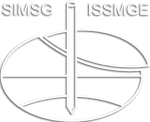Utilization of incineration bottom ash amended soft marine clay in land reclamation
Utilization of incineration bottom ash amended soft marine clay in land reclamation
Land reclamation is one of the solutions for enlarging territories, which requires a considerable amount of filling materials. Singapore is now short of conventional filling materials such as sand and gravel. Soft marine clay (MC) is a common geological material in Singapore. However, it is not preferred as a filling material for land reclamation due to its high water content and high compressibility. Meanwhile, incineration bottom ash (IBA) from the waste-to-energy plant is an aggregate-like material, which is currently landfilled in Singapore due to heavy metals. The combination of MC and IBA (IBA-MC) may complement each others limitations. Therefore, this study aimed to explore the utilization of IBA-MC as a potential filling material in land reclamation. The stability of IBA-MC in seawater was studied because it may alter when IBA-MC encounters seawater in the field. The appearance, unconfined compressive strength, water content, mineral compositions, and microstructure of IBA-MC before and after soaking in seawater were investigated. The results showed that after soaking in seawater, IBA-MC tended to develop superficial cracks and had significantly lower strength than those cured in the sealed bag. The mineralogy and microstructure of IBA-MC suggested that the formation and growth of ettringite were responsible for the instability of IBA-MC soaked in seawater.
X. Sun; Y. Yi
9th International Congress on Environmental Geotechnics (ICEG2023)
Stabilization
https://doi.org/10.53243/ICEG2023-54
